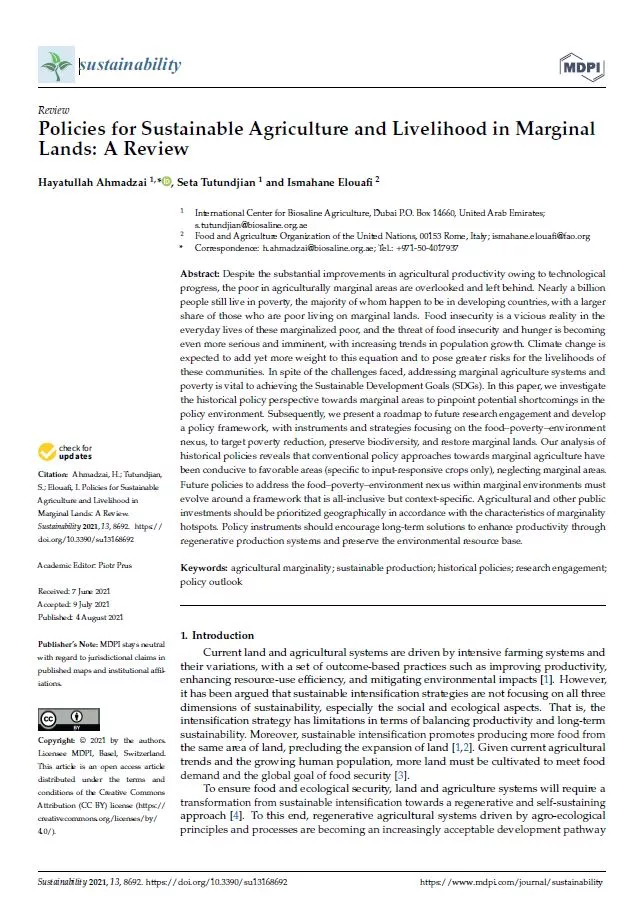Policies for Sustainable Agriculture and Livelihood in Marginal Lands: A Review
Despite the substantial improvements in agricultural productivity owing to technological progress, the poor in agriculturally marginal areas are overlooked and left behind. Nearly a billion people still live in poverty, the majority of whom happen to be in developing countries, with a larger share of those who are poor living on marginal lands. Food insecurity is a vicious reality in the everyday lives of these marginalized poor, and the threat of food insecurity and hunger is becoming even more serious and imminent, with increasing trends in population growth. Climate change is expected to add yet more weight to this equation and to pose greater risks for the livelihoods of these communities. In spite of the challenges faced, addressing marginal agriculture systems and poverty is vital to achieving the Sustainable Development Goals (SDGs). In this paper, we investigate the historical policy perspective towards marginal areas to pinpoint potential shortcomings in the policy environment. Subsequently, we present a roadmap to future research engagement and develop a policy framework, with instruments and strategies focusing on the food–poverty–environment nexus, to target poverty reduction, preserve biodiversity, and restore marginal lands. Our analysis of historical policies reveals that conventional policy approaches towards marginal agriculture have been conducive to favorable areas (specific to input-responsive crops only), neglecting marginal areas. Future policies to address the food–poverty–environment nexus within marginal environments must evolve around a framework that is all-inclusive but context-specific. Agricultural and other public investments should be prioritized geographically in accordance with the characteristics of marginality hotspots. Policy instruments should encourage long-term solutions to enhance productivity through regenerative production systems and preserve the environmental resource base.
Year
2021
Publication Source
Sustainability
Publication type
Scientific Paper
Volume/Chapter/Issue
13











